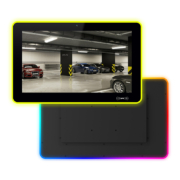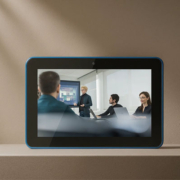What is an Example of Digital Signage?
Digital signage refers to the use of digital displays, such as LED screens, projectors, and interactive kiosks, to convey information, advertise products, or engage customers in public spaces. These displays can show dynamic content, such as videos, images, text, and animations, which can be updated in real time to suit the specific needs of the business or environment.
Digital signage is widely used across various industries, from retail and hospitality to transportation and corporate offices. This article will explore some common examples of digital signage and how they are being used to enhance customer experience, drive sales, and streamline communication.
1. Retail Digital Signage
One of the most common and effective uses of digital signage is in retail environments. Retailers use digital signage to advertise products, promote sales, and engage customers.
Example:
A clothing store uses digital signage screens near the entrance to display advertisements for the latest fashion trends or limited-time sales. As customers walk by, they are greeted by dynamic videos showcasing new arrivals or special discounts. These signs can be integrated with sensors to display specific promotions based on the time of day or customer behavior, offering a personalized experience.
Benefits:
- Attracts customer attention with dynamic visuals.
- Increases foot traffic to special offers or new products.
- Reduces the need for printed materials, saving costs and reducing waste.
2. Restaurant Digital Menus
Another example of digital signage is the use of digital menu boards in restaurants and fast-food chains. These screens are often installed above the counter or drive-thru to display the menu, special promotions, or nutritional information.
Example:
A fast-food restaurant uses large digital screens in the drive-thru lane to display the menu. The screen can be updated in real-time to show limited-time offers, combo deals, or discounts based on the time of day (e.g., breakfast specials in the morning). The system also integrates with the POS (point-of-sale) system to automatically update pricing and menu items.
Benefits:
- Easy to update and modify menus and promotions.
- Reduces the need for printing new menu boards, leading to cost savings.
- Enhances customer experience with clear, easy-to-read visuals.
3. Airport Information Displays
Digital signage is also widely used in airports to convey important information to passengers, such as flight status, gate changes, and security alerts.
Example:
In an airport terminal, digital signage displays are placed near each departure gate and throughout the concourse to show real-time flight information. These screens update automatically with flight delays, boarding times, and gate assignments. Digital signage also shows important safety messages, weather conditions, and airport amenities.
Benefits:
- Provides real-time updates, reducing confusion and wait times for passengers.
- Allows for easy changes to flight information and emergency announcements.
- Enhances customer experience by keeping travelers informed and up-to-date.
4. Interactive Kiosks for Wayfinding
In large public spaces, such as malls, museums, and universities, interactive digital kiosks help people navigate and find specific locations. These kiosks provide interactive maps, directories, and event schedules.
Example:
In a shopping mall, an interactive kiosk at the entrance allows customers to search for stores, view promotions, and find restrooms or exits. Users can touch the screen to select their desired store or location, and the kiosk displays a detailed map with directions.
Benefits:
- Helps visitors navigate large spaces with ease.
- Provides an interactive and engaging experience.
- Reduces the need for staff assistance, saving time and resources.
5. Corporate Communication Displays
Many corporate offices use digital signage to communicate with employees, share company news, and display important information like meeting schedules or performance metrics.
Example:
In a corporate lobby, a digital signage display shows the company’s latest news, upcoming events, and the achievements of employees. In meeting rooms, digital signage can display the schedule for the day’s meetings and alert employees about room availability.
Benefits:
- Keeps employees informed and connected to company news.
- Facilitates smooth communication in large office spaces.
- Reduces paper waste by using digital displays instead of printed notices.
6. Outdoor Digital Billboards
Digital billboards are a large-scale example of digital signage, often seen in high-traffic areas, such as highways, city centers, and stadiums. These billboards display large, attention-grabbing advertisements.
Example:
An outdoor digital billboard on a busy city street features advertisements for local businesses, upcoming events, or public service announcements. The content on the billboard can change throughout the day, displaying different ads during rush hours or at night.
Benefits:
- Captures attention in high-traffic areas.
- Can be updated remotely, allowing for timely promotions and dynamic content.
- Provides an eco-friendly alternative to traditional paper billboards.
7. Healthcare and Hospital Digital Signage
Hospitals and healthcare facilities use digital signage to provide patients and visitors with real-time updates, directions, and essential information.
Example:
In a hospital, digital signage screens in the lobby and waiting areas display patient check-in instructions, health tips, and emergency alerts. Wayfinding screens guide visitors to the appropriate departments or rooms, and digital signage in elevators can show news, weather, and hospital announcements.
Benefits:
- Helps patients and visitors find their way easily within the facility.
- Reduces the need for paper signage, leading to a cleaner and more organized space.
- Provides real-time updates about important health information or emergencies.
8. Education Institutions and Campus Displays
Digital signage is used in educational institutions to communicate schedules, campus events, and emergency alerts to students and faculty.
Example:
In a university, digital signage displays are placed in common areas, such as hallways and cafeterias, to show the class schedule, club events, and university announcements. The screens can also be used to show news, campus safety alerts, and upcoming lectures.
Benefits:
- Increases student engagement with campus events and information.
- Can be used to display emergency or urgent information in real-time.
- Reduces paper waste and the need for printed schedules or flyers.
Digital signage is an innovative way to communicate and engage with audiences across various industries. From retail and hospitality to transportation and healthcare, digital signage solutions provide dynamic, real-time content that can be tailored to suit specific business needs. Whether it’s enhancing customer experience, advertising products, or conveying important information, digital signage helps businesses create more effective, interactive, and visually engaging environments.










